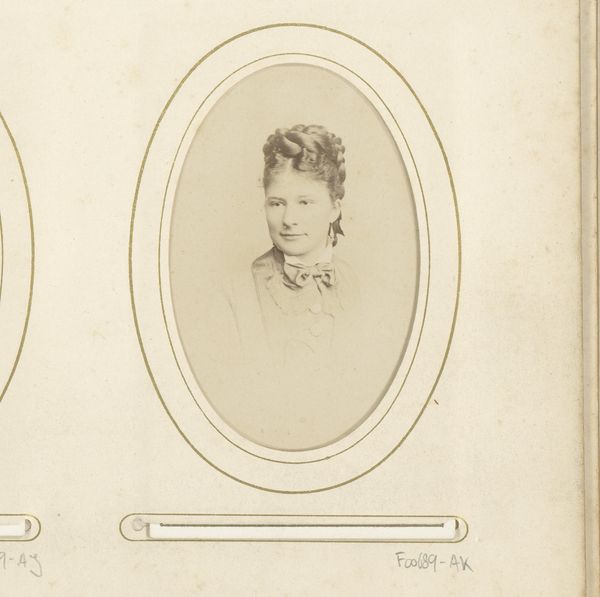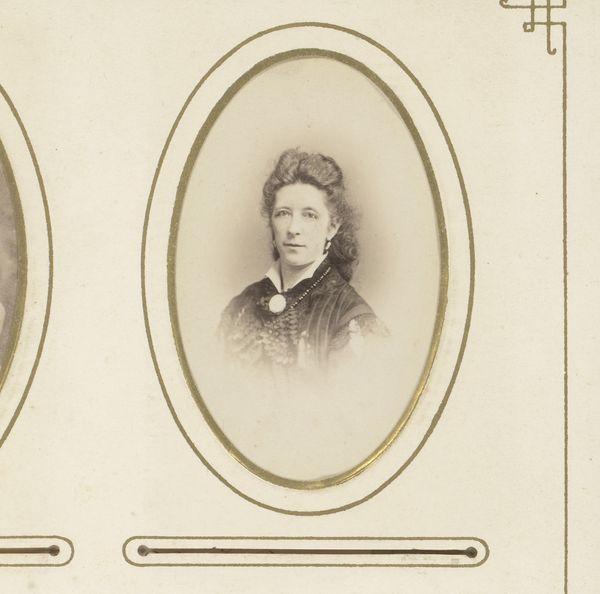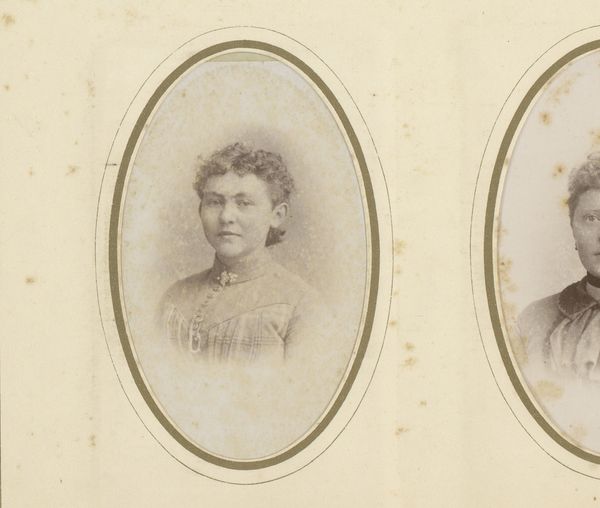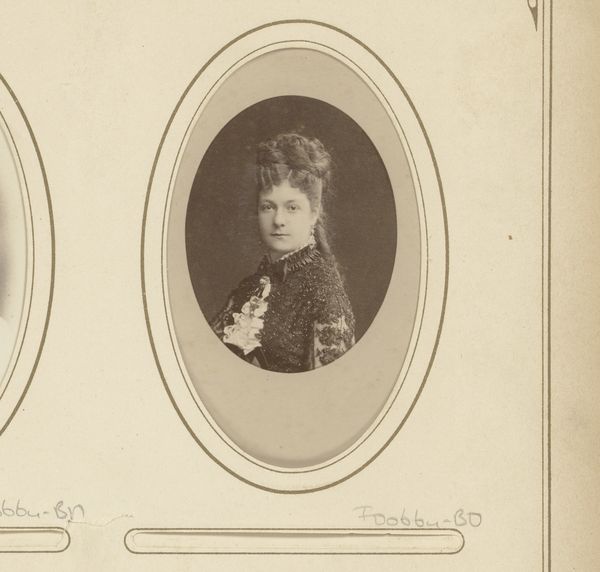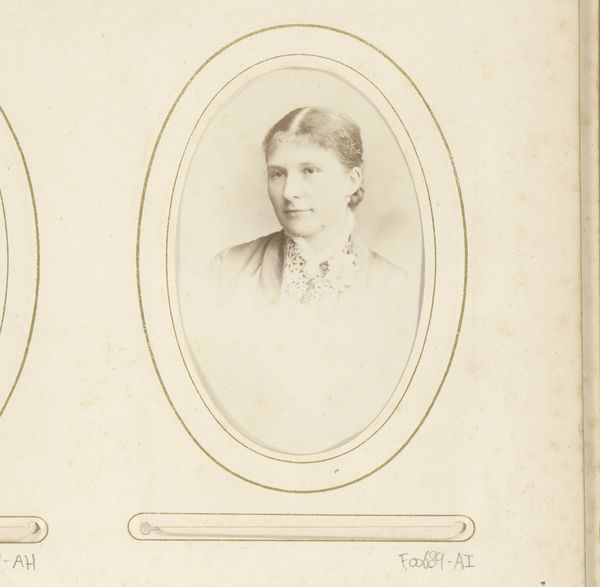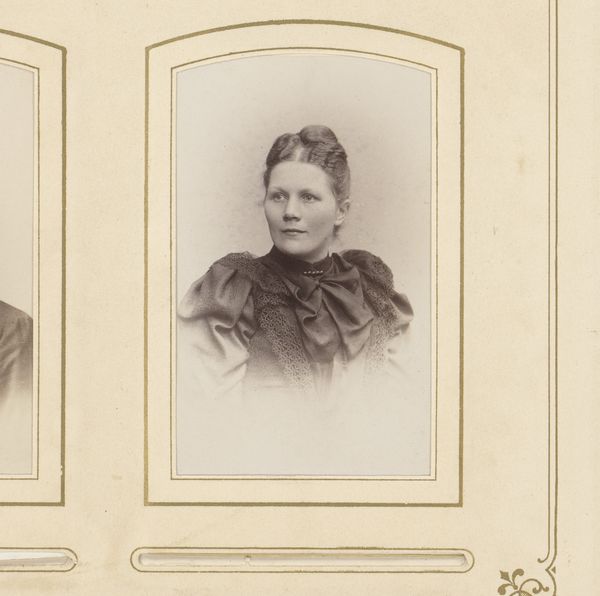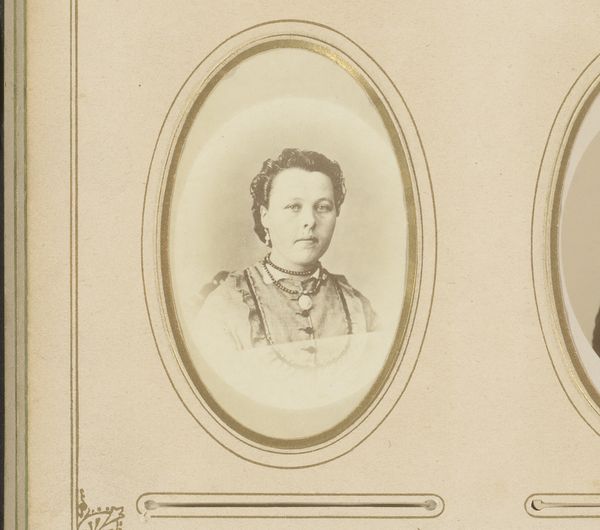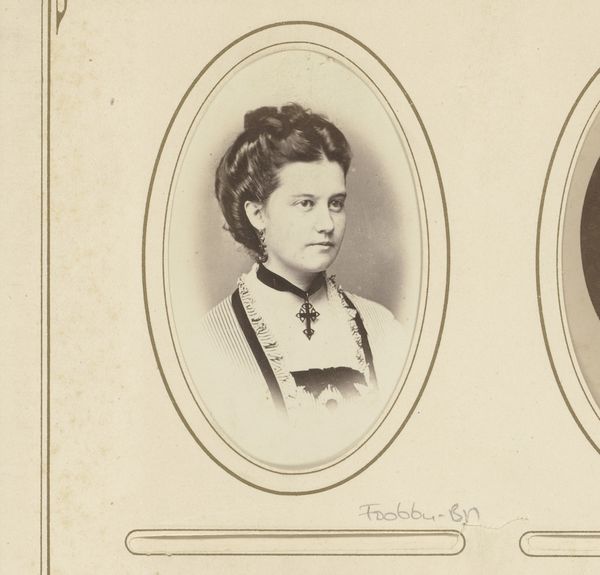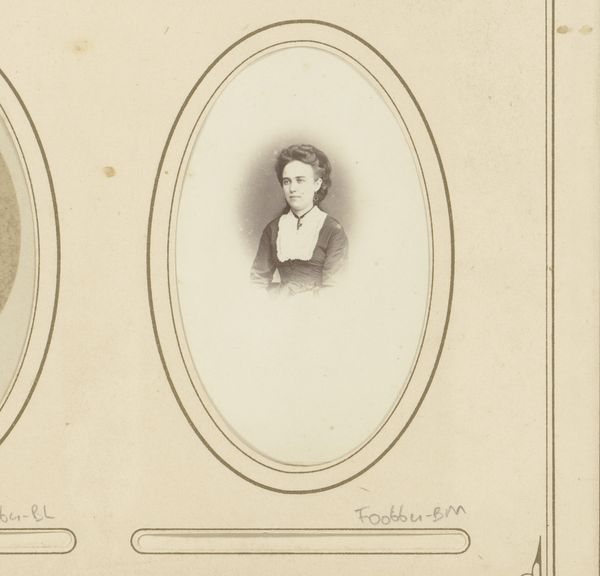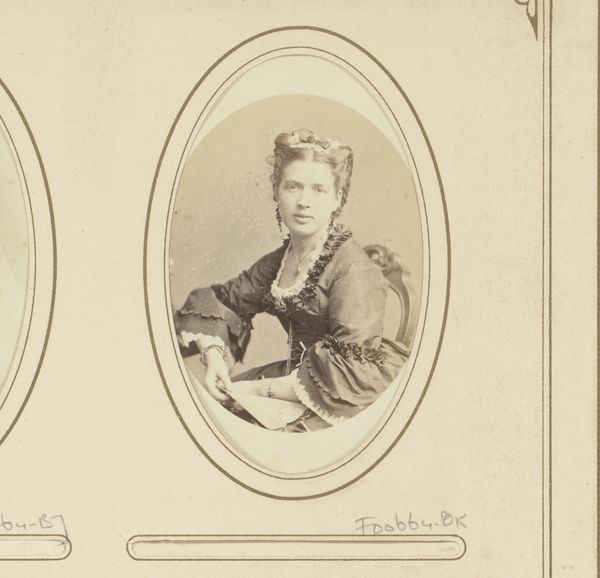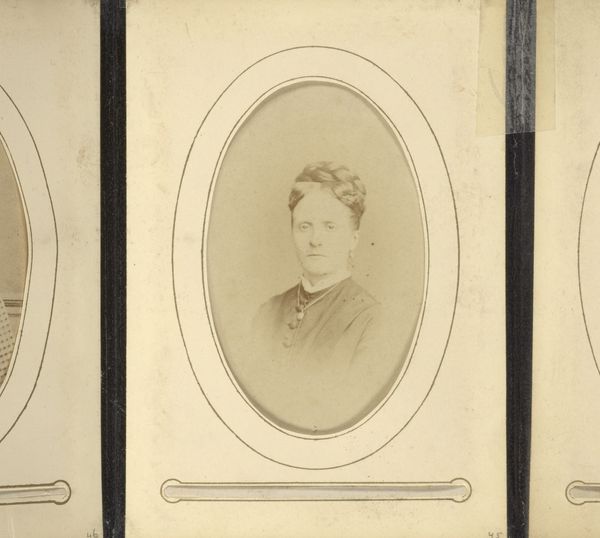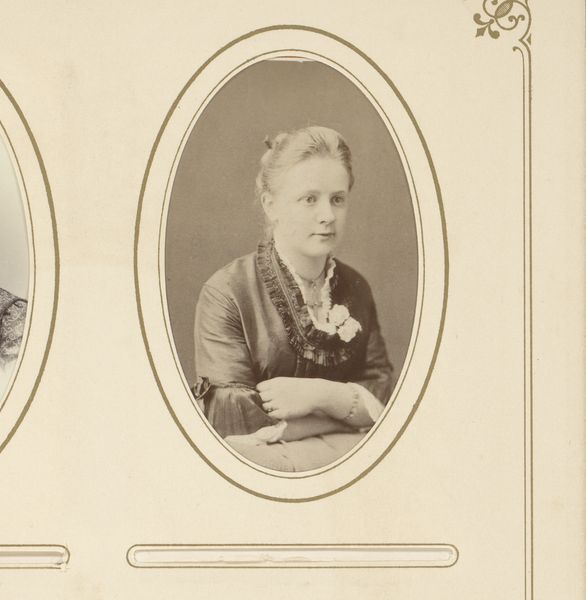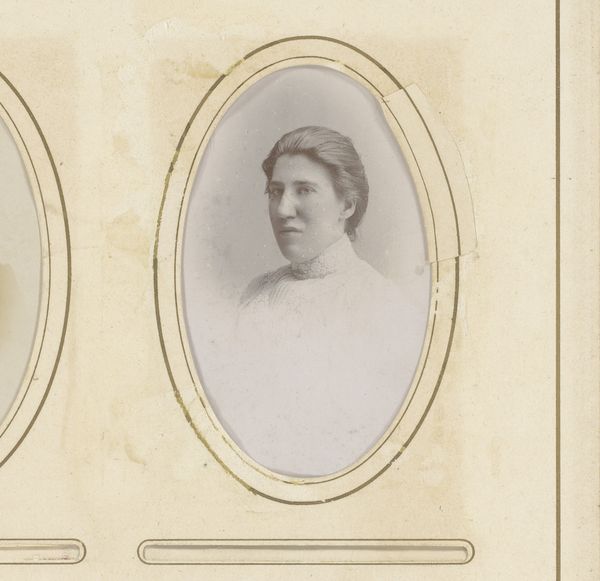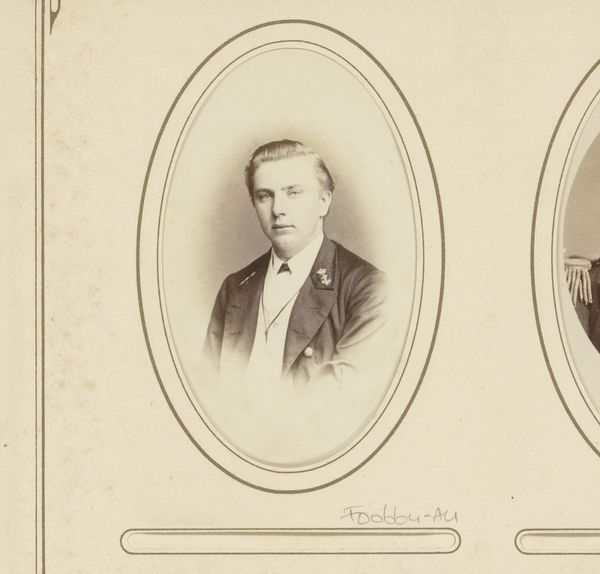
photography, gelatin-silver-print
#
portrait
#
aged paper
#
toned paper
#
light pencil work
#
16_19th-century
#
vintage
#
pencil sketch
#
old engraving style
#
photography
#
historical photography
#
old-timey
#
gelatin-silver-print
#
19th century
#
golden font
Dimensions: height 82 mm, width 52 mm
Copyright: Rijks Museum: Open Domain
Editor: This gelatin silver print, "Portret van een vrouw" from 1860-1880, attributed to Woodbury & Page, has such a quiet presence. It makes me wonder about the story behind the image and the materials used to create it. How do you interpret this work through a materialist lens? Curator: For me, it starts with the gelatin silver print itself. Think about the labor involved in creating the emulsion, coating the paper, the precise chemistry needed for development. Photography in this period wasn't just about capturing an image, but about a whole industry and skilled labour. Who produced that gelatin, and where did the silver come from? Editor: So you see the photograph as embedded in these larger networks of production and labour. Does the sitter come into this material story, too? Curator: Absolutely. Her clothing – the lace, the fabric, even the simple bow tie – speaks to consumption, class, and the accessibility of certain goods at the time. Was this woman from the emerging middle class, and was photography part of demonstrating social mobility and material wealth? It's not just a portrait; it's an artifact loaded with information about production and consumption practices of the era. Even the 'old engraving style' that is alluded to in some of the tags tells us something about printing technology and its connections to broader artistic markets and cultural forms. Editor: That's fascinating! I hadn't thought about reading a portrait in terms of the global economy and the history of materials. It reframes the photograph. Curator: Exactly. And notice the ‘aged’ or ‘toned paper’, itself now evidence of its own material transformation through time. How has this print changed since it was first made, and how has that process shaped what it communicates? Editor: That's really expanded my understanding, moving beyond just aesthetic appreciation to considering the complex material conditions that enabled its creation. Thanks!
Comments
No comments
Be the first to comment and join the conversation on the ultimate creative platform.
